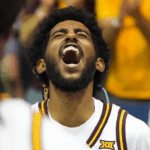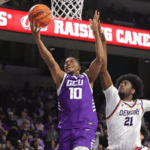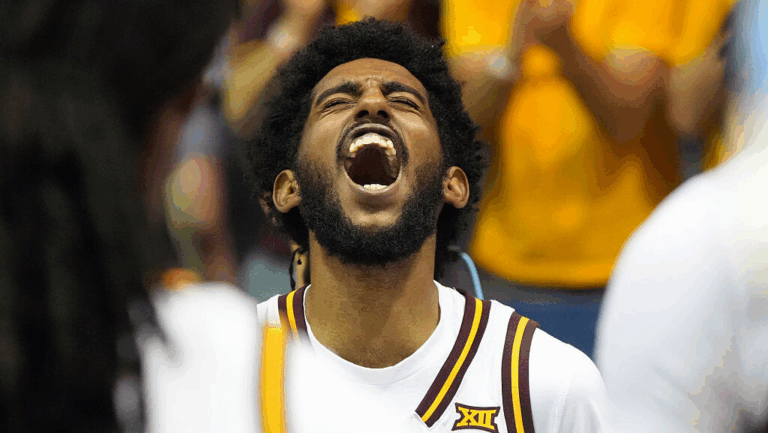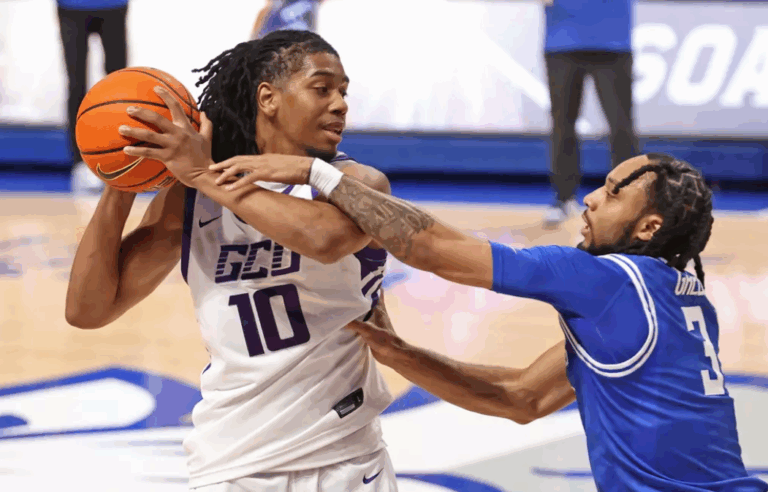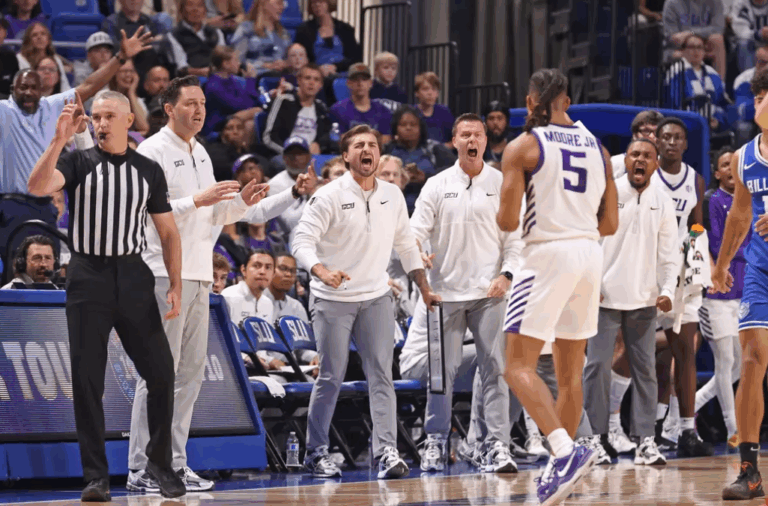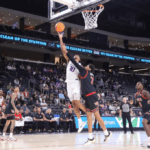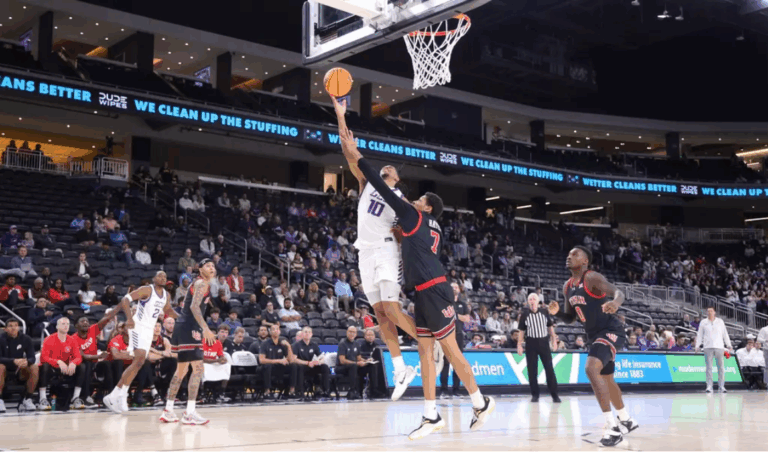Palm Springs, CA — Some games reveal who you are more clearly than others, and Grand Canyon’s 68–58 win over Utah said plenty. It wasn’t a showcase of shot-making or highlight-reel offense. It was a battle of will, toughness, and defensive poise—a rock fight that GCU not only survived, but controlled.
Utah entered the matchup shooting a respectable 41% on the season, but GCU’s trademark defensive edge immediately disrupted the Utes’ rhythm. Every catch felt rushed. Every screen felt flattened. And every possession seemed to push Utah deeper into the clock. The Utes finished at just 31% from three, struggled to generate quality rim attempts, and coughed up 14 turnovers, many of them driven by GCU’s physical point-of-attack pressure.
For the Lopes, the offensive flow never truly materialized from the perimeter—they did not make a single three (0–10)—but they didn’t need to. What they lacked in outside shooting, they compensated for with persistent paint touches, deliberate halfcourt execution, and, most importantly, free throws. GCU attempted 32 from the stripe, converting 22, a margin that ultimately decided the game in a night defined by defensive stops more than smooth scoring.
It’s a Team Game for GCU
And at the center of it all was Jaden Henley, whose breakout performance arrived at the perfect moment. Henley’s 18 points were not the product of heat-check threes or transition leak-outs—they were earned through physical drives, disciplined spacing, and a measured confidence that Utah never seemed able to match. Whenever GCU needed someone to steady a possession, Henley supplied it. Whenever the offense stalled, he forced the issue, drawing contact and piling up free throws (8-of-9). On the defensive end, his three steals punctuated an effort that felt as complete as any GCU performance this season.
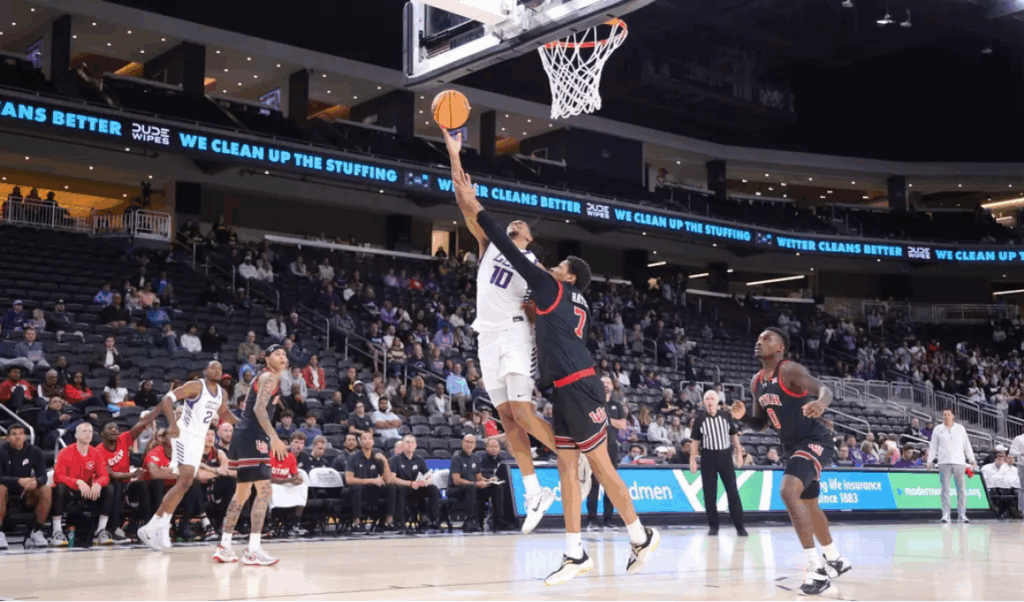
Around him, the supporting cast filled in the gaps. Brian Moore Jr. added 11 points, many of them critical midrange jumpers that broke Utah’s occasional defensive momentum. Makai Williams provided pace control and secondary creation. Nana Owusu-Anane fought relentlessly on the glass, nearly securing a double-double while anchoring the backline. Even in limited minutes, Wilhelm Breidenbach and Caleb Shaw brought structural stability—nothing flashy, just winning basketball.
All of it—every rebound, every free throw, every contested jumper—now funnels into a marquee championship matchup with one of the best offensive teams in the country.
Acrisure Classic Championship Preview: GCU vs Iowa
Wednesday night’s final isn’t just a trophy game—it’s a collision of two contrasting basketball identities. Iowa arrives with one of the nation’s most fluid and efficient offenses. Through November 25, the Hawkeyes rank 15th nationally in Adjusted Offensive Efficiency (121.4), powered by pristine spacing, elite finishing at the rim, and an almost mechanical ability to avoid turnovers. They shoot the ball with surgical precision: 63% effective field goal percentage, an eye-opening 66% inside the arc, and nearly 77% at the line. Their offense is built to stretch you, bend you, and punish even momentary rotations.

But the other side of Iowa’s identity is where opportunity exists. Defensively, the Hawkeyes are still trying to solve who they want to be. Their 102.7 Adjusted Defensive Efficiency is far from elite, and opponents have consistently exploited them through the paint and the offensive glass. Teams don’t need overwhelming firepower to score on Iowa—they just need discipline and physicality.
That is exactly the formula GCU brings.
Defense or Offense, What Wins?
Where Iowa’s offense excels through pace and spacing, GCU’s strength lies in its ability to control tempo, defend without fouling, and turn games into halfcourt battles. The Lopes’ #55-rated defense doesn’t rely on gambling or chaos; it relies on forcing uncomfortable shots, cutting off the second side of actions, and maintaining glass discipline with one of the better defensive rebounding units in the country. And offensively, while GCU’s efficiency rating sits at 110.5, that number has climbed dramatically in recent games as Henley emerges into a reliable late-clock creator.

The battle in the paint may define everything. Iowa thrives inside, but GCU’s interior defense, anchored by Nana and Breidenbach, has quietly become one of the more underrated units in mid-major basketball. If the Lopes can force Iowa into a higher volume of threes than twos—something opponents have rarely accomplished—the defensive math begins to tilt.
On the other side of the ball, the matchup favors GCU more than it might seem at first glance. Iowa has struggled guarding downhill guards and physical wings, and Henley fits that profile perfectly. If Iowa opts to load up on him, the burden may shift to Makai Williams, whose midrange scoring and change-of-pace driving could exploit the weak points in Iowa’s rotations. With GCU’s offensive rebounding and foul-drawing numbers significantly above D-I averages, Iowa faces a challenge it hasn’t fully solved this year: how to defend a team determined to play through its chest.
This isn’t a matchup where GCU will want to run. It’s one where they will want to choke pace, limit Iowa to one shot, and grind possessions to their preferred tempo. And if they can do that, they’re instantly in position to steal the game late.
Prediction
GCU 73, Iowa 70.
The Lopes slow the game, win the free-throw battle, and lean once again on Henley’s newfound confidence to close out possessions Iowa usually wins.


